

 | It may be true that 2008 was financially lean, but even though times were tough, a lot of great books made it into print. Some of our very favorite books were thick and lush and rich in spirit if not in fact. And if there were less books published than usual, we certainly did not notice it. As always, the January Magazine stacks were also thick and it was apparent that many worthy books were published during the year. As usual, our best of the year feature reflects the books our contributors and editors liked best in 2008. We review from almost all branches of the book industry and, as a result, our choices run the gamut. The January Magazine Best Books of the Year list is not a popularity contest. Our choices reflect what our writers and editors liked best of the books they read and enjoyed throughout the year. They don’t need to qualify their choices or explain them to anyone. There is no board or panel. No quotas from certain publishers, no authors that must be included. These are, quite simply, the books that our well read eyes and hearts liked best, listed in alphabetical order within the loose category in which they fall. | December 2008Click below for the list you'd like to see:
• children's books • fiction • non-fiction • art & culture • crime fiction from A-G, by title • crime fiction from H-Z
|
First, Why Great Books?
Many have written on this subject, but I think Nigel Beale, Ottawa-based writer, broadcaster, bibliophile, is particularly articulate. This is an abbreviated version of his essay, “Why Read Great Literature: the guide to a good life,” included here with his permission.
 Most of us, through a combination of personal experience, education and advice from others, cultivate and try to follow as best we can, a set of values, ‘final narratives,’ beliefs, or central convictions about politics, love, sex, money, religion beauty, justice… in order to live a life we deem worth living. Great works of literature, when read seriously, can help. They can shake beliefs and change lives, provide solace and give direction. Some narratives reflect and conform to our own lived experience; many contradict or differ from it. The process of absorbing, accepting and/or rejecting these competing visions, ideas, world views and life maps constitutes an essential benefit of reading.
Most of us, through a combination of personal experience, education and advice from others, cultivate and try to follow as best we can, a set of values, ‘final narratives,’ beliefs, or central convictions about politics, love, sex, money, religion beauty, justice… in order to live a life we deem worth living. Great works of literature, when read seriously, can help. They can shake beliefs and change lives, provide solace and give direction. Some narratives reflect and conform to our own lived experience; many contradict or differ from it. The process of absorbing, accepting and/or rejecting these competing visions, ideas, world views and life maps constitutes an essential benefit of reading.What should one ask of a major work? Is it true? Can I live it? Put it into action? Does it show me how to live better, without fear, more joyously, exuberantly? Can I use it? What aspect of life does it illuminate? How can I translate its words into action? How does the author’s vision compare to my own narrative, my own experience in the world? What possibilities exist for intellectual and or emotional change? Writers, if they want to produce enduring work, need to answer our questions about how to live, or how not to, and provide guidance on what to do.
The test of a book lies in its power to transform life. It may charm, divert, teach something of the wider world, but if it can’t help at least some to imagine a different, better life, then it probably isn’t a major work. What determines a work’s longevity is the degree to which it serves as a successful guide to achieving the true, good, beautiful life; the degree to which it serves as a sort of Bible, one there for you to read for yourself, without the nervous attention of hovering priests telling you what it means.
Here is a short video prepared by the Great Books Foundation that addresses the dual questions: Why Great Books? Why Shared Inquiry?. Classical Pursuits veterans will surely recognize some familiar faces. Great Books Unbound
Now, why Shared Inquiry?
The following is a mix of more words from Nigel Beale, some from Chuck Scarcliff’s wonderful “A Heretic’s Guide to leading Great Books Discussions,” and some of my own words.
The best reader admits, with Socrates, that he is lost. This isn’t easy in a culture filled with know-it-all punditry, sound bite certainty and pre-digested knowingness. Everywhere, the ‘authoritative’ spew forth: talking heads, hired to impart wisdom, partial often in impartial guise, complicit in the consumer con-game we call society, where the mediocre is hailed as great!
 Shared Inquiry is the name given by a wonderful organization in Chicago, The Great Books Foundation, to a method of guided discussion in which participants help one another search for answers to fundamental questions raised by a text. Participants come with their own ways of encountering and experiencing Dante, Shakespeare, or Virginia Woolf. Together, they build on their views through a sharing of ideas.
Shared Inquiry is the name given by a wonderful organization in Chicago, The Great Books Foundation, to a method of guided discussion in which participants help one another search for answers to fundamental questions raised by a text. Participants come with their own ways of encountering and experiencing Dante, Shakespeare, or Virginia Woolf. Together, they build on their views through a sharing of ideas.Here are some indicators of a good Shared Inquiry discussion.
1. Everyone has the opportunity to contribute freely to the discussion ― and everyone makes the most of that opportunity.
2. No one dominates the discussion. And that includes the leader.
3. Discussion practices of Shared Inquiry ― sticking to the subject, not using outside references for support, etc. ― are followed. Departures, if any, are brief, seldom and harmless.
4. The best discussions have spontaneity. The good ones give the illusion of being spontaneous.
5. Spontaneity means good discussions have a flow ― not always an even flow, but one that at times moves rapidly and at others, more leisurely.
6. Good discussions explore the ideas of the text with as much depth as the group is able and willing to handle. New insights develop and are created along the way.
7. Good discussions won’t necessarily cover all of the author’s ideas, but they will probe deeply into the more important ones. It is far better to treat a few, sometimes even a very few, points with depth than to discuss many points superficially.
8. We want our participants to have a good time, to enjoy themselves, but we want more. In good discussions they will also gain new insights, to formulate and to articulate their thoughts more clearly than they would have by reading but not discussing the book.
 In preparing for Shared Inquiry discussion, active reading is crucial. Mark passages that seem especially revealing or profound and reflect on them. These may sum up an argument, give advice, offer predictions, provide examples illustrating an idea, or serve as occasions for direct reflection by the author or a character. Or they may simply be a particularly eloquent, beautiful expression of an idea. Jot down your insights, questions, arguments with the author, and anything else that occurs to you about the selection as you read it. This ensures that such observations will not be lost between reading sessions, and that your understanding will have a greater chance to grow. Moreover, by forcing yourself to write down your responses, you will keep your mind active while you read.
In preparing for Shared Inquiry discussion, active reading is crucial. Mark passages that seem especially revealing or profound and reflect on them. These may sum up an argument, give advice, offer predictions, provide examples illustrating an idea, or serve as occasions for direct reflection by the author or a character. Or they may simply be a particularly eloquent, beautiful expression of an idea. Jot down your insights, questions, arguments with the author, and anything else that occurs to you about the selection as you read it. This ensures that such observations will not be lost between reading sessions, and that your understanding will have a greater chance to grow. Moreover, by forcing yourself to write down your responses, you will keep your mind active while you read.The main thing to know is that Shared Inquiry is not intimidating and it is lots of fun. Come with your questions and an open mind, and you will not be disappointed.
If you missed the video up above, here it is again. Prepared by the Great Books Foundation, it addresses the dual questions: Why Great Books? Why Shared Inquiry?. Classical Pursuits veterans will surely recognize some familiar faces. Great Books Unbound
I invite you to share your own experiences or, if you are new to Great Books or Shared Inquiry, your questions.
Related Posts:
'The Passage' by Justin Cronin
Best Books of 2010 - Top Books of the Year
What is The Passage? It is a new standard for provocative and arresting apocalyptic literature, one of the must-read books of 2010. The Passage is the pinnacle of a decade of books fascinated with bloodsuckers & the end of the world. Intrigued?

Picture from The Harry Potter Lexicon
By mousing-over each book picture you will be able to see the book's review.
You can also click right through and buy from Amazon.com or Amazon.co.uk if you like the sound of a book.
Bioteams Books is a collaboration
You will notice that there are only about 50 books featured so far - this is where I need your help!
I want you to send me your nominations for books to be added to The Bumblebees Top 100 Collaboration books - even better if you can write a short review I will add it to the gallery with full credits to you for writing it.
Bioteams carries no adverts
Recently I have had many approaches about putting advertising on bioteams.
Even though they are quite attractive financially I have not accepted any advertising so far on the site as I feel this is not what my readers want.
So if you can bookmark Bioteams Books and get into the habit of buying your books from Bioteams Books you will be supporting bioteams and working with me to it free from adverts at no cost to yourself!
A book roundup of 2007
In conjunction with the release of Lightroom 3, D65 launched a new website offering Lightroom Webinars, Tech Support, and intensive Lightroom Workshops. The D65 workshops and interactive, live webinars are a dynamic resource for digital photographers of any level. Their 4-day intensive will equip you with the tools to manage your workflow efficiently, effectively, and effortlessly. The 1.5 hour webinars highlight features of Lightroom 3. Seth Resnick and Jamie Spritzer are the perfect guides to lead you through the maze technical problems and practical challenges that stand between you and a seamless digital workflow with Lightroom at the core.

Seth Resnick and Jamie Spritzer, the Co-Founders of D65 also announced their new book , D65′s Lightroom Workbook, Workflow, Not Workslow in Lightroom 3. This book details everything you ever wanted, or needed to know about the five modules in Lightroom, including setting up preferences for optimal results and organizing catalogs. Included is an entire chapter which details the D-65 legendary workflow; an advanced, yet simple workflow from capture through editing, tweaking, processing and exporting.

Seth Resnick and Jamie Spritzer, the Co-Founders of D65 also announced their new book , D65′s Lightroom Workbook, Workflow, Not Workslow in Lightroom 3. This book details everything you ever wanted, or needed to know about the five modules in Lightroom, including setting up preferences for optimal results and organizing catalogs. Included is an entire chapter which details the D-65 legendary workflow; an advanced, yet simple workflow from capture through editing, tweaking, processing and exporting.
The Adobe Photoshop Lightroom 3 book
To coincide with the announcement and launch of Adobe Photoshop Lightroom 3, The Adobe Photoshop Lightroom 3 book by Martin Evening and published by Adobe Press, is now also ready to ship. The book will be be available to buy via the Peachpit website, plus the usual on-line and retail stores.
The Adobe Photoshop Lightroom 3 book contains 672 pages and provides readers with a website <www.thelightroombook.com> with movie tutorials, supplementary PDFs and sample files (registration required). It promises to be the most comprehensive book on Lightroom and all that’s new in Lightroom 3.
April 13, 2009
Photoshop Lightroom 2 Made Easy book
Source: Lightroom-Blog.Com

Sean McCormack’s Lightroom 2 Made Easy book has just gone on sale recently.
Sean writes: “I guess it helps when the publisher tells you, but my Lightroom book is finally out! It’s not listed as available on Amazon.com, but is on Amazon.co.uk for a measly £7.49 (50% off list). It’s so cheap you should buy 2 :)”

Sean McCormack’s Lightroom 2 Made Easy book has just gone on sale recently.
Sean writes: “I guess it helps when the publisher tells you, but my Lightroom book is finally out! It’s not listed as available on Amazon.com, but is on Amazon.co.uk for a measly £7.49 (50% off list). It’s so cheap you should buy 2 :)”
July 31, 2008
Auto-masking in Lightroom 2

The true stars of Lighroom 2 are the localized adjustment tools. For the first time, photographers can now edit their raw files using the adjustment brush and gradient filter tools. These allow you to apply all kinds of adjustments such as: darkening, lightening, coloring or sharpening an image. The following extract is taken from my new book in which I show how to work with the adjustment brush and auto-masking feature.
23jun 2012
Martin Evening’s Lightroom 2 book
Photo: Jeff Schewe
This post comes from Chicago where I am working with Jeff Schewe on a joint Focal Press book project to do with Photoshop. Meanwhile, print copies of the Adobe Photoshop Lightroom 2 book were delivered to the studio last week, so now that Lightroom 2 has been officially announced, I can reveal that the Lightroom 2 book print run is complete and shipped to the main warehouse, ready for distribution.
The Adobe Photoshop Lightroom 2 book contains 624 pages and has been fully updated for all the major changes since version 1.0. I’ll be publishing some extracts from the book here on Lightroom-news over the next few weeks and you’ll also be able to read some extra article extracts over on Peachpit.com. You can also read some of the back story to the cover photo shoot as well as a video podcast that George Jardine made earlier this year.
List Price: $49.99 (US)
This post comes from Chicago where I am working with Jeff Schewe on a joint Focal Press book project to do with Photoshop. Meanwhile, print copies of the Adobe Photoshop Lightroom 2 book were delivered to the studio last week, so now that Lightroom 2 has been officially announced, I can reveal that the Lightroom 2 book print run is complete and shipped to the main warehouse, ready for distribution.
The Adobe Photoshop Lightroom 2 book contains 624 pages and has been fully updated for all the major changes since version 1.0. I’ll be publishing some extracts from the book here on Lightroom-news over the next few weeks and you’ll also be able to read some extra article extracts over on Peachpit.com. You can also read some of the back story to the cover photo shoot as well as a video podcast that George Jardine made earlier this year.
Now available for order at:
ISBN: 0-321-55561-9List Price: $49.99 (US)
June 30, 2012
The Lightroom 2 book photo shoot
Earlier, in March this year, George Jardine from Adobe and Jeff Schewe came over to London to help document a fashion photo shoot that I shot specifically for the next revision of my Lightroom book. The background to this is that the publisher, Peachpit and myself thought it would be a good idea to carry out a studio photo shoot in which I could use the photographs that were taken on the day to illustrate a complete Lightroom workflow, using the latest version of the program. As well as capturing some great looking images, I also hoped to find a new cover image for the book, and in addition to this, Adobe have also requested to use some of these pictures as demo assets for Lightroom and other Adobe product presentations. Incidentally, the finished book will now be ready to go on sale as soon as Lightroom 2 officially ships.
You can find out more about the shoot itself by checking out the video George Jardine made while he was in London, which shows the progress of the shoot from concept, through to model casting and creating the finished looks. There is also a separate video podcast that George produced which shows me going through the pictures at the editing stage and discussing which shots worked best and why.
December 21, 2012
A book roundup of 2007
Source: Photoshopnews

This is a story we created for Photoshopnews, but as you will see, there were also a few books about Lightroom and others to do with digital photography.
“As we approach the end of 2007 we wanted to ask some of the leading figures in the Photoshop community which books they had found most inspiring and in the case of authors, which books they had written were they most proud of. We got some interesting and quite varied responses. So if you are still stuck for ideas about what to get a Photoshop geek for Christmas, here are some reading tips from the experts.
To keep this article seasonal we didn’t want it to be entirely about Photoshop and digital imaging. We did also ask people to nominate a book for recreational reading. After all, the holiday season is a time for relaxing and leaving work to one side! To help you find out more about the books recommended here we have created links to Amazon.com for all the books featured here.”
Read the full story…

This is a story we created for Photoshopnews, but as you will see, there were also a few books about Lightroom and others to do with digital photography.
“As we approach the end of 2007 we wanted to ask some of the leading figures in the Photoshop community which books they had found most inspiring and in the case of authors, which books they had written were they most proud of. We got some interesting and quite varied responses. So if you are still stuck for ideas about what to get a Photoshop geek for Christmas, here are some reading tips from the experts.
To keep this article seasonal we didn’t want it to be entirely about Photoshop and digital imaging. We did also ask people to nominate a book for recreational reading. After all, the holiday season is a time for relaxing and leaving work to one side! To help you find out more about the books recommended here we have created links to Amazon.com for all the books featured here.”
Read the full story…
June 29, 2012
Scott Kelby’s Lightroom 1.1 Update Kit is Up!
Source: www.scottkelby.com
Author: Scott Kelby
Scott Kelby today anounced a Lightroom 1.1 update kit for The Lightroom Book for Digital Photographers.

Yippie! It’s up!!! (I guess it actually went up yesterday, but I didn’t get the exact URL for the download until this morning. Sorry ’bout that).
Remember: this update was created exclusively for people who actually own my book “The Lightroom Book for Digital Photographers” and I created this 1.1 Update Kit as an added benefit for those specific people (whom I dearly love, by the way).
Author: Scott Kelby
Scott Kelby today anounced a Lightroom 1.1 update kit for The Lightroom Book for Digital Photographers.

Yippie! It’s up!!! (I guess it actually went up yesterday, but I didn’t get the exact URL for the download until this morning. Sorry ’bout that).
Remember: this update was created exclusively for people who actually own my book “The Lightroom Book for Digital Photographers” and I created this 1.1 Update Kit as an added benefit for those specific people (whom I dearly love, by the way).
June 28, 2007
Photoshop Lightroom Adventure Book Covers Lightroom 1.1
Source: O’Reilly Digital Media, Inside Lightroom
Author: Colleen Wheeler

My favorite thing about the release of Lightroom 1.1? We’re going to press this week with Mikkel’s beautiful book, Photoshop Lightroom Adventure. And we’re doing so knowing that it will be the most up-to-date Lightroom book out there. Over the past few months, Mikkel has been painstakingly updating the manuscript for the changes anticipated in version 1.1, a monumental task. Not only did he have to diligently monitor and document all the great new features that were being added for LR 1.1, but he had to reshoot most of the nearly one thousand images in the book to reflect the new interface.
Read the full story…
Author: Colleen Wheeler

My favorite thing about the release of Lightroom 1.1? We’re going to press this week with Mikkel’s beautiful book, Photoshop Lightroom Adventure. And we’re doing so knowing that it will be the most up-to-date Lightroom book out there. Over the past few months, Mikkel has been painstakingly updating the manuscript for the changes anticipated in version 1.1, a monumental task. Not only did he have to diligently monitor and document all the great new features that were being added for LR 1.1, but he had to reshoot most of the nearly one thousand images in the book to reflect the new interface.
Read the full story…
March 28, 2007
Camera Calibration panel tips

The Camera Calibration panel in Lightroom can be used (with a little help from Photoshop) to calibrate your digital captures to get the most accurate color. But that’s not all. If you play around with the sliders you will find that you can also use the Camera Calibration panel to do the very opposite of what it is meant for and create some unusual coloring effects.

leave a comment »

View a poster version of the Top 50 Books For Teachers
There are few jobs more courageous than becoming a teacher. Not only are the hours long and the pay not that great, but teachers also have to come up with their own inspiring lesson plans, schedules, and homework. This is all before even entering the classroom, and as any veteran teacher will tell you, it’s best to expect the unexpected in that area. Teachers will encounter bullying, disrespect, frustration, joy, love, and triumph during their career. It’s a job for which no college class can fully prepare anyone. Fortunately, there are hundreds of books written by real teachers that share real stories, tips, tricks, and motivation that will make the transition from college campus to primary or secondary school teacher that much easier. The following 50 books about teaching cover everything from lessen plans to teacher appreciation, and while certain books may be better suited for different grade levels, all are considered some of the finest in their particular area.
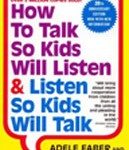
50. How to Talk So Kids Will Listen & Listen So Kids Will Talk by Adele Faber and Elaine Mazlish
Communicating with children may seem easy enough, but when a teacher has 30 new faces looking back at them, they’ll be glad they read this book. While the book was originally designed for parents, it’s become a teacher’s guide on how properly to instruct children in the classroom so they’ll listen better and pay attention.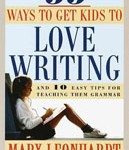
49. 99 Ways to Get Kids to Love Writing: And 10 Easy Tips for Teaching Them Grammar by Mary Leonhardt
Writing is an important skill, but few teachers teach it well enough so the child will actually want to continue doing it on their own. In this book, Mary Leonhardt explains how teachers can start encouraging writing for children as young as preschool age. For higher up grade levels, the book also explains easy ways to make grammar fun rather than frustrating.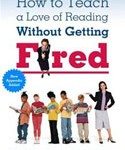
48. How to Teach a Love of Reading Without Getting Fired by Mary Leonhardt
Those who teach teenagers will quickly learn that you can’t make them do anything they don’t want to… or can you? This book provides teachers with dozens of suggestions to help increase reading and promote classroom discussion among older students. Best of all, it can all be done through fun classroom lessens rather than punishments or extra homework.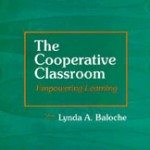
47. The Cooperative Classroom: Empowering Learning by Lynda A. Baloche
Cooperation is key in any job, but even more so when teaching a large group of students. While this book was originally designed for those teaching teenagers, it can easily be applied to all grade levels. The book explains in detail why, how, and when cooperation should be used to improve the classroom experience.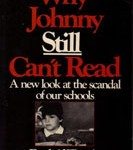
46. Why Johnny Still Can’t Read by Rudolf Franz Flesch
While this book wasn’t specifically designed for teachers, it includes detailed exercises on phonics, reading, and sight words that has been helpful in many classrooms. Since this book helps teachers help those who are having trouble reading, it’s recommended for those teaching younger grades.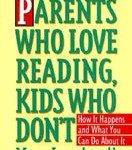
45. Parents Who Love Reading, Kids Who Don’t: How It Happens and What You Can Do About It by Mary Leonhardt
This is another book that was designed more for parents but provides teachers with valuable insight into the mind of a child. The book explains that the reason most children don’t like reading is because teachers put too much emphasis on it. By stepping back and taking a much more relaxed approach to reading, teachers are able to get their entire classroom enjoying more books.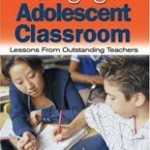
44. Managing the Adolescent Classroom: Lessons From Outstanding Teachers by Glenda Beamon Crawford
Teaching adolescents requires a completely different method than teaching younger children. These students now have a mind of their own which can sometimes lead to trouble in the classroom. Fortunately, this book provides teachers with 14 different studies, examples, and behavioral techniques that will improve the classroom environment dramatically.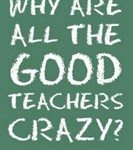
43. Why Are All the Good Teachers Crazy? by Frank Stepnowski
For those looking for an honest idea of what the teaching profession is like, this book is a must read. Not only are the blunt observations refreshing, but the book is also considered to be one of the funniest reads about the teaching career path. The book shares several true stories about classroom antics, all while reminding the reader that despite it all, teachers can still have fun at their job.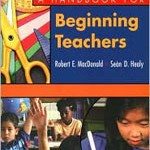
42. A Handbook for Beginning Teachers by Robert E. MacDonald
For those who are looking for a single book that covers just about everything imaginable, this manual is perfect. The handbook includes everything from popular teaching methods to what rookies can expect during their first few months on the job. It also covers more recent topics, such as the use of technology in the classroom.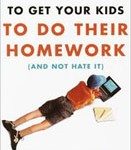
41. 99 Ways to Get Your Kids To Do Their Homework (And Not Hate It) by Mary Leonhardt
Wouldn’t it be great if students always did their homework? That’s the exact idea behind Mary Leonhardt’s book for teachers and parents. While students will certainly never love doing homework, the book does provide many methods on how to make the process as painless as possible. It also helps teach children, parents, and even teachers how to develop a healthy attitude in regards to all schoolwork.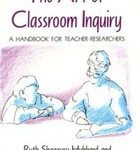
40. The Art of Classroom Inquiry: A Handbook for Teacher-Researchers by Ruth Shagoury Hubbard and Brenda Miller Power
This book was considered groundbreaking when it was first published because it was one of the first books that gave readers a glimpse into the life of both teacher and student. Chapters cover everything from a teachers first day on the job to veteran educators who are considering retirement.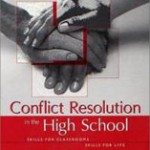
39. Conflict Resolution in the High School: 36 Lessons by Linda Lantieri
While high school can be a wonderful experience to some, the average teenager will experience bullying, taunting, and tormenting on a daily basis. Not only do these actions disrupt the classroom, but they can also cause grades to drop and further problems to develop. Fortunately, this book covers not only how to stop bullying, but also how to address the problems before they turn into negative classroom behavior.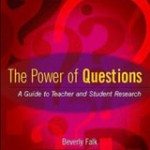
38. The Power of Questions: A Guide to Teacher and Student Research by Beverly Falk and Megan Blumenreich
Many teachers teach their students why things are the way they are, but few dare to teach their pupils to question why that is. While blindly following the facts will certainly result in good grades, teaching children to question everything they learn will help them continue to grow long after graduating. This book explains the importance of asking questions both for educational purposes and for personal growth.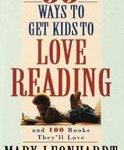
37. 99 Ways to Get Kids to Love Reading: And 100 Books They’ll Love by Mary Leonhardt
After teaching for over 30 years, author Mary Leonhardt has learned a thing or two about reading. Regardless of whether teachers are just beginning or have been at their job for decades, this book provides dozens of tips that will turn the entire classroom into avid readers before the end of the year. Even better, the book also includes a list of the top 100 stories that children are guaranteed to enjoy. This makes it a must for any teacher planning to have their own classroom library.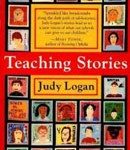
36. Teaching Stories by Judy Logan
It can be challenging for a beginning teacher to imagine how their life will be 30 years from now, but they can get an idea thanks to Teaching Stories by Judy Logan. The book is written in a series of short essays that are designed to inspire and motivate teachers to do their best and have fun while doing so. The book describes the daily challenges, choices, joys, frustrations, and conflicts that teachers will face throughout their lives. It also discusses the students that went on to graduate, win awards, and believe in themselves thanks to the dedication of their teachers.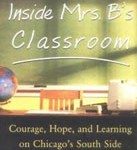
35. Inside Mrs. B.’s Classroom : Courage, Hope, and Learning on Chicago’s South Side by Leslie Baldacci
When teachers start out, they believe they have a general idea of what to expect. Then, after teaching for a few years, they look back and realize they didn’t have a clue what they were getting into. That’s exactly what happened to Mrs. B when she decided to quit her job and take up teaching in one of the roughest schools in Chicago. This book tells the inspiring story of how one teacher can set out to make a difference, and against all odds, succeed.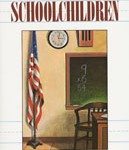
34. Among Schoolchildren by Tracy Kidder
Imagine spending an entire school year watching and observing what goes on in your typical 5th grade class. That’s exactly what Tracy Kidder did, and this book includes a detailed account of what he experienced. From joys to disappointment, everything is captured in this revealing book. While much has changed in the educational system since it was published, it still offers soon-to-be teachers a glimpse of what their life will soon be like.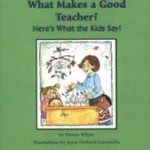
33. What Makes a Good Teacher? Here`s What the Kids Say! by Donna Whyte
While most of the books on this list are serious, this one is a lighthearted read that makes a great addition to any classroom. At the end of the day, it doesn’t matter how well teachers taught, it’s the little things that children will remember. Those real life details are shared in this 32-page book, making it a perfect read for story time.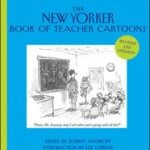
32. The New Yorker Book of Teacher Cartoons by Robert Mankoff
Teachers work late hours grading paper and preparing future lesson plans. This can make reading books challenging, but that’s not a problem with “The New Yorker Book of Teacher Cartoons.” The book contains 118 comic cartoons all relating to teaching. Not only is it lighthearted and easy to read, but it also makes a great addition to any teacher break room.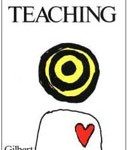
31. The Art of Teaching by Gilbert Highet
Gilbert Highet began teaching students in the early 1930s and retired in the late 1970s. While teaching has certainly changed since then, this book gives all teachers, new and old, a glimpse of how some things really are timeless. The book operates on the basis that teaching is a fine art that must be perfected over the years. Each teacher has their own unique style, but once that style has been found, it can be sculpted into something that has the power to change the world.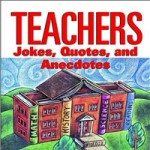
30. Teachers Jokes Quotes And Anecdotes by Stark Books
Just because teachers are educating the young minds of tomorrow doesn’t mean they can’t have some fun while doing so. This book reminds teachers that, while their jobs are important, it’s also important to take the time to laugh at yourself. The book includes several jokes, quotes, and other funny reading material that is sure to help lighten the mood of the reader.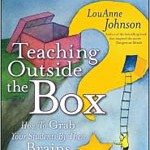
29. Teaching Outside the Box: How to Grab Your Students By Their Brains by LouAnne Johnson
The best teachers are the ones that make learning fun. This may seem like a simple enough concept, but when educators are attempting to teach their fourth grade class their multiplication tables, it can seem impossible. That’s where this book comes in handy. Regardless of the lesson plan, it includes many unique methods to engage the classroom in fun learning.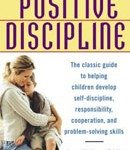
28. Positive Discipline in the Classroom: Developing Mutual Respect, Cooperation, and Responsibility in Your Classroom by Jane Nelsen
While most teachers do a great job of educating their students, there will always be a few that are known as “the mean one” to students everywhere. This decision may be based on homework load, attitude, or for simply no real reason at all. Whatever the reason, this book helps teachers develop mutual respect with their students. Children will no longer be viewing their educator as “the mean one” but as “the reasonable one,” and really, that’s what every teacher wants.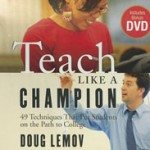
27. Teach Like a Champion: 49 Techniques that Put Students on the Path to College by Doug Lemov
The ultimate goal of a teacher is to see their students succeed in life. It can be a challenge to spend so much time with a classroom, only to send them on their way at the end of the year never knowing what their future may hold. While this book doesn’t guarantee that every student that’s taught will go on to complete college and live a successful life, it does include simple, yet effective, teaching techniques that will help increase the likelihood dramatically.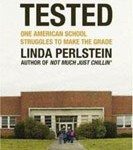
26. Tested: One American School Struggles to Make the Grade by Linda Perlstein
The No Child Left Behind bill remains controversial to this day, but regardless of political views, the act remains a part of educational history. The story this book tells takes place shortly after the bill was passed in an attempt to find out if the school systems work better or worse under the new rules. The book includes first-hand details of a once failing school in an attempt to deliver an unbiased and thought-provoking view of the new policies.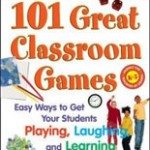
25. 101 Great Classroom Games: Easy Ways to Get Your Students Playing, Laughing, and Learning by Alexis Ludewig and Dr. Amy Swan
Wouldn’t it be great if students looked forward to coming to school each morning? While that probably won’t ever happen, this book does a great job of providing fun activities that children will actually look forward to. With games such as Geography Baseball and Bull’s-Eye Feather Math, students will learn important skills while having a blast doing it. Even better, the games are scored based on noise level. This means that teachers will be able to have an educational, fun, and quiet day. Even first-time teachers can surely appreciate the benefits of including this book in their lesson plan.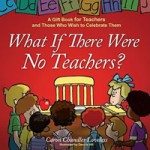
24. What If There Were No Teachers? by Caron Chandler Loveless
Teachers are expected to work long hours with little pay all so they can help the students they teach. More often than not, however, the students are too younger to understand all the work that goes into this career choice. When things start to get frustrating, teachers can pull out this 48-page book to read to their classroom. The story describes another world where teachers don’t exist. The world is sad at first, but as the story goes on, it becomes much more uplifting thanks to the kind hearts of teachers.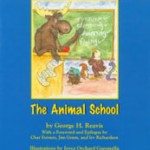
23. The Animal School by George Reavis
There will come a time when teachers feel like they’re managing a zoo, but what if they actually were? That’s exactly what happens in this children’s book. Not only is the book a cute story for younger children, but it also gives teachers a chance to explain to their class that just because you’re not the best at one thing doesn’t mean you won’t excel in another.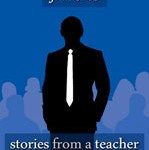
22. Stories from a Teacher by J. Flores
Jonathan Flores became one of the youngest and most favored teachers at his school. He taught with a high level of enthusiasm and dedication that all his students fell in love with. Then, after only four years of teaching, he quit suddenly. In this book, he shares his stories, some hilarious and some heartbreaking, about exactly what it’s like to be a teacher in today’s world.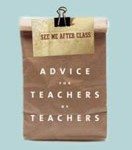
21. See Me After Class: Advice for Teachers by Teachers by Roxanna Elden
There will come a point in ever teacher’s career where they think if they teach another day, they’ll surely go crazy. This book recognizes that, yes, that will happen, but it’s not always a bad thing. Teachers will get a wide range of advice mixed with humor, sarcasm, and reality when reading this book.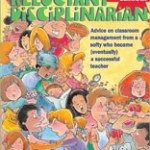
20. Reluctant Disciplinarian: Advice on Classroom Management from a Softy Who Became (Eventually) a Successful Teacher by Gary Rubinstein
Nearly all educators become teachers because they want to help others. This is a great reason, but unfortunately, it’s not enough. As teachers help their students learn, they must also have firm rules and discipline in place should things get out of control. This was a challenge for one teacher. After a horrendous first year, he set off to write a book so no future educator would ever make his same mistakes.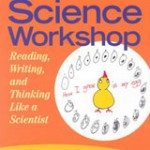
19. Science Workshop: Reading, Writing, and Thinking Like a Scientist by Wendy Saul
We live in an age where math, technology, and English trumps over nearly every other school subject. Only at the very bottom of the pile, buried someone between Sex ED and foreign language, is science. This is especially true for younger children who enter middle school without the basic knowledge of how the universe works. What is even worse about this is that science is arguably one of the coolest subjects there is. Every child loves learning about the planets or how an egg transforms into a chicken, yet most teachers skip right over this to focus on other subjects. For those who are looking to embrace science, this book does a fantastic job of inspiring dozens of fun lessen plans that can be tied in with other subjects.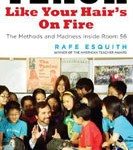
18. Teach Like Your Hair’s on Fire: The Methods and Madness Inside Room 56 by Rafe Esquith
For teachers who have ever wondered if they can make a difference, this book is a must read. The story takes place in California, in a neighborhood where guns, gangs, drugs, and violence are a regular occurrence both on the street and in the hallways. One teacher, Rafe Esquith, is given the task of teaching a class of fifth grade immigrants who only have a basic understanding of English. Despite this, these students achieve some of the highest standardized test scores in the country. Based on a true story, this book is sure to inspire anyone.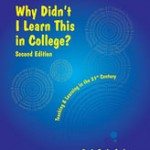
17. Why Didn’t I Learn This in College? by Paula Rutherford
Attending college will give future teachers a lot of the skills they need to succeed, but there’s much more to learn than just that. This book was written based on the Teacher Alternative Preparation Program that is used in Georgia. In the program, experienced teacher mentor the new comers in an attempt to teach them everything that wasn’t covered in college. The book includes dozens of tips ranging from what to expect at a teacher conference to how to best interact with student’s parents.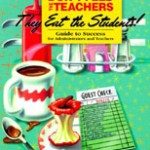
16. If You Don’t Feed the Teachers They Eat the Students: Guide to Success for Administrators and Teachers by Neila A. Connors
This book is one of the many others that is filled to the brim with inspiration, wisdom, tips, techniques, and more. What sets it apart from other books is that it gives readers a dose of humor that is much needed when facing each problem.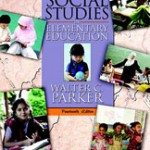
15. Social Studies in Elementary Education by Walter C. Parker
In the past, many elementary school teachers didn’t teach their students social studies or history. The basics were cover, but the bulk of these subject were reserved for high school or middle school students. For those who are looking to give their class a head start on the subject, this book is the ideal match. It includes dozens of age appropriate teaching material that covers government, geography, pedagogy, and more.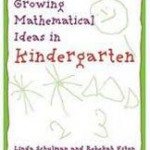
14. Growing Mathematical Ideas in Kindergarten by Linda Schulman Dacey
If you ask a person what school subject they struggled with the most, the majority will say math. While teaching math in kindergarten may not seem hard, it’s still extremely challenging for the students who are just now learning how to count and write. This book recognizes these challenges and helps to educate teachers on the best way to nurture and improve those skills.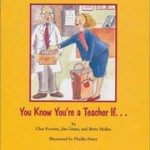
13. You Know You’re a Teacher if… by Char Forsten
While this isn’t the typical ‘teaching book,’ it does give both rookie and veteran teachers a quick reminder of why they decided to become educators. The book, which is only 38 pages, gives several quirky examples of the unique mindset that only teachers posses. It’s also a simple enough read that younger children can follow along, making it the perfect story time book.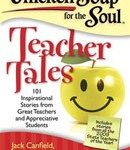
12. Chicken Soup for the Soul: Teacher Tales: 101 Inspirational Stories from Great Teachers and Appreciative Students by Jack Canfield, Mark Victorhansen, and Amy Newmark
As children grow and learn, there will always be that one special teacher that touches their life more than anyone else. Often times teachers don’t realize that they’ve made such a big impact, but it is something that the student is unable to forget. These are the stories that are told in this book. Whether teachers think they’ve made a difference or not, this book is a great reminder that there are students out there who appreciate everything their teacher does.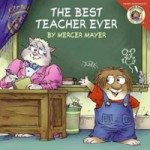
11. Little Critter: The Best Teacher Ever by Mercer Mayer
Imagine having the best teacher in the whole world. A teacher that is so good that they even make math class fun! That’s exactly what happens in this book, the only problem is now Little Critter has to find his teacher the perfect gift to show his appreciation. This book is only 24-pages, making it perfect for teachers to read to their preschoolers or kindergarten classes. Best of all, the moral is to appreciate others for all that they do.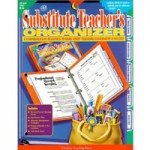
10. The Substitute Teacher’s Organizer: A Comprehensive Resource to Make Every Teaching Assignment a Success; Grades K-6 by Jane Herbst
Even if teachers never intend to substitute, it’s always a good idea to have a plan just in case. Not only does this book provide dozens of tips, but also lessen plans that are designed to be photocopied on the go. For those who plan to sub often, it also includes tips on how to keep multiple lesson plans organized while also recording the daily classroom activities. Even for teachers who don’t sub, this book is perfect to pass along should they find themselves sick and unable to teach the class themselves.
9. School: The Story of American Public Education by Sarah Mondale
While not a book you’ll see in most school libraries, this gives readers a look back on the educational system and how the whole thing started. The book includes information on the founding fathers of education, their hopes, dreams, and what has been accomplished since. While this book doesn’t necessarily cover teaching topics directly, it provides readers with an in depth look at just how important and life changing the school system can be.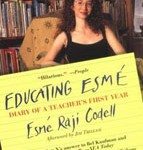
8. Educating Esme: Diary of a Teacher’s First Year by Esmé Raji Codell
Wouldn’t it be great if teachers knew exactly what they were facing before starting their first year? While that’s not entirely possible, this book shares the journey of a first time teacher and her struggles to be the best for her students. The book reads as a dairy, giving newcomers an honest glance inside the world of a teacher.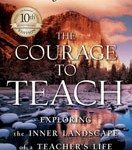
7. The Courage to Teach: Exploring the Inner Landscape of a Teacher’s Life by Parker J. Palmer
Nearly everyone who becomes a teacher does so because they want to help children learn. There’s a lot of passion, love, dedication, and courage that goes into the decision to become a teacher, but unfortunately, many people lose sight of this over time. This book helps teachers to take a step back and reconnecting with themselves. It’s easy to get frustrated in the hustle and bustle of teaching, but this book helps remind teachers that, as long as their heart is still in it, their students will shine.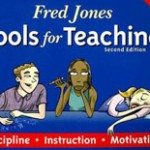
6. Fred Jones Tools for Teaching: Discipline, Instruction, Motivation by Patrick Jones
Any teacher can be good, but this book shares the skills that make teachers exceptional. Whether it’s by motivating the classroom, reducing bullying, increasing grades, holding fun-raisers, or just making learning fun, this book covers all that and more.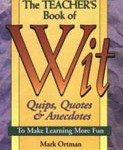
5. The Teacher’s Book of Wit: Quips, Quotes & Anecdotes to Make Learning More Fun by Mark Ortman
While teaching is an important job, sometimes it’s important to take a step back and laugh. All teachers will experience their fair share of frustration, anger, confusion, joy, and sorrow before they retire. This book pokes fun at all those experiences by offering hundreds of quotes and observations taken from everyday life. The book categories these laughs into over 60 different sections, including everything from mathematics to sexual education. While you don’t have to be a teacher to enjoy this book, those who are will find it particularly amusing.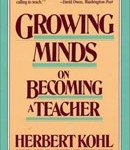
4. Growing Minds by Herbert R. Kohl
Herbert Kohl is known as one of the most influential educators in America and for good reason. His philosophy is that, in order to be a good teacher, teachers must become involved in the life of the student rather than just the lesson plans. He goes on to explain exactly how to do this in his 192-page guide. The guide also includes amusing stories, practical tips, and inspirational content that all teachers are sure to love.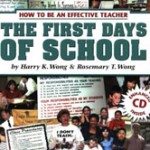
3. The First Days Of School: How To Be An Effective Teacher by Harry K. Wong
They say first impressions are important, and for teachers, it can make or break the school year. This book acts as a guide for rookie teachers and covers everything from kindergarten to college. There are hundreds of teaching ideas, tactics, techniques, and projects, but the real reason the book is so popular is because it allows teachers to blossom. Because the book acts as a guide, it allows teachers to form their own teaching style and grow and learn just as their students do.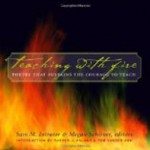
2. Teaching with Fire: Poetry That Sustains the Courage to Teach by Tom Vander Ark, Parker J. Palmer, and Sam M. Intrator
There’s something extra special about poetry. Whether it’s the way the words rhyme or the beats in each phrase, poetry has long been considered an art that is both healing and inspiring. Teaching isn’t an easy job, but when things get to be frustrating, everyone should have this book on their desk to help remind them why they are there.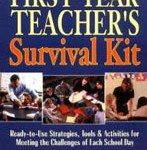
1. The First-Year Teacher’s Survival Guide: Ready-To-Use Strategies, Tools & Activities for Meeting the Challenges of Each School Day by Julia G. Thompson
While there are a lot of useful books that beginning teachers will read, “The First-Year Teacher’s Survival Guide” may just be the best. The book includes tested tips, tools, strategies, activities, and more that teacher all across America have been using in their classroom. This include everything from learning how to properly connect with students to how to handle every behavioral problem imaginable. The book has also recently been updated to include more modernized tips, such as how to create a teaching schedule while working in a year-round environment or which educational websites and software are the best to incorporate in the classroom.The book was originally designed for first-time teachers who are looking for an idea of what to expect and how to cope with their first school year. That being said, even teachers who have been at the job for decades stated that they found the book to be extremely helpful and filled with valuable information.
The Bureau Staff has book recommendations for your Christmas list.

Daniel D’Addario
Union Atlantic by Adam Haslett
The swift-moving Union Atlantic features a cast of characters straight from a Bronte novel — the rakish, secretive gentleman; the ingénue with a lot to learn; the spooky old lady. And yet it’s also perfectly modern, a document of the varieties of greed and desire that brought about the financial crisis of the 2000s. One character turns a regional bank into a global financial-services corporation; others fall victim, in all the familiar ways, to economics micro- and macro-.
Their reactions to economic crisis are what set Union Atlantic apart. The novel, by short-story writer Adam Haslett, is as tightly constructed as any short — each character’s actions affect other characters, which is far less Babel than it sounds. Too, the gay affairs and communing with ghosts and financial gamesmanship are all significantly less lurid than they might be in less steady hands. Union Atlantic got a lot of praise for dissecting the 2000s, but what makes that summation of a decade work is not the talking points — as it sometimes seemed in Jonathan Franzen’s Freedom — but the subtler sense that everything had become connected, financially and emotionally. It is all very tenuous, but that it works at all is remarkable.
Elliot Allagash by Simon Rich
Elliot Allagash bears no similarity to any high school narrative I’ve ever even heard of, which is precisely its charm. The novel combines the vicarious enjoyment of rich-kid narratives like Gossip Girl or the society pages with old-school James Bond villainy. The titular Elliot is a schoolboy, rich beyond imagining, who takes on a classmate as a Svengali project.
Simon Rich clearly knows the New York prep-school scene whereof he writes — while the twists and turns of the narrative break free of the homecoming/prom rut, the actions of his characters always feel right. Elliot, in particular, is a deliriously funny and yet always believable comic creation — it takes quite a bit of work to make a high-schooler who drinks expensive liquor and plots for social domination into a flesh-and-blood being, but through a few well-chosen moments, Rich makes him human. Seymour, the protagonist, is largely reactive, but that feels real too — when you’re in the room with someone as convincing, in all senses of the word, as Elliot, you follow him as far as he’ll take you.
The Publisher by Alan Brinkley
This superlative biography of Henry Luce reveals the sort of mind one must have to create a magazine that defines the zeitgeist. Brinkley was a master of the high-concept: Time, Fortune, Life – these are not niche publications. Nor were they ever: as conceived, Time digested the news for millions of Americans and set the tone of discussion with its lofty, often quirky manner of circumlocution. At one point, Luce, an elitist, striving Yale alumnus raised in China, moved Time Inc. to Cleveland to save money, but its place at the geographic center of American life seems fitting.
That Luce’s publications are now more niche than they ever were is left unremarked-upon, which is fitting. Luce was a master of his moment whose moment passed more quickly than might have been suspected. Perhaps he knew that before anyone else: as The Publisher nears its conclusion, the always-isolated Luce grows increasingly more private, a Charles Foster Kane without the excess. It must be lonely, contacting everyone in America each week.
Kevin Nguyen
Dear Burglar,
I’d like to thank you for two things. First, for forcing me to learn how to spell burglar. I’ve been spelling it burgular, maybe because I usually mispronounce the word as berg-AH-ler. But more importantly, thank you for climbing through the window of my apartment and stealing the Kindle sitting on my desk. Now that you’ve taken my primary reading device, I don’t have to think about books anymore. God, reading was such a nuisance; you probably agree. It takes so long and wastes so much time — time that could be spent messing with other people’s stuff.
But if you succumb to the literary temptations of my Kindle, here are a few book suggestions:
Room by Emma Donoghue
A mother and her son are trapped in a room, and have been for the past five years. Why are they there? Will they ever get out? The hook is a bit like Old Boy, but with a less fucked up ending. (You haven’t seen Old Boy? Don’t worry, I own it. Feel free to break in and steal that whenever you please.)
Most impressive is Donoghue’s ability to write from the perspective of five-year-old Jack, portrayed with an endearing naiveté that makes him sympathetic but never frustrating. He knows nothing outside of the bedroom’s four walls. For Jack, the room is home; for his mother, it’s a prison. Room is a powerful story about the parent-child bond wrapped in the pages of the most engaging novel I’ve read in years — I finished all 336 pages of this book in less than a day. Room will, somewhat fittingly, keep you trapped in your own bedroom.
Everything Here is the Best Thing Ever by Justin Taylor
Unlike Tao Lin, Justin Taylor is able to write about disaffected youth without making them appear anemic. Everything Here is the Best Thing Ever is a near-perfect collection of short stories about ambiguous relationships and the frustration of shapeless, aimless lives.
Taylor gets chuckles from small ironies (one story features a protagonist who plays Tetris until the world ends), but the stories’ darker themes are revealed with understatement. The book’s best, “Tennessee” (which you can read at Harper Perennial’s Fifty-Two Stories), ends with a girl asking the narrator to sleep with her before she leaves for Israel. “I don’t want to die a virgin,” she says. Theodore Wheeler, writing for The Millions, puts it best:
Unlike their grandparents, this generation of Jews isn’t afraid of dying in the Holocaust or a Pogrom — they fear car bombs and terrorist attacks. By the end, the plot anxieties of “Tennessee” aren’t really resolved, but the philosophical points are at least connected by the impending sexual act, exemplifying how the fear of apocalypse is passed on.
This generation may be different, but the fears are the same.
Wilson by Daniel Clowes
OK, you can’t actually read this on the Kindle because it’s a comic book. (My girlfriend bought it for me, and since you’ve taken everything I owned of monetary value, please take the things I own that have burdened me with sentimental value.)
Wilson is an exercise in restraint: each page, drawn in a different style, is a self-contained six- or seven-panel strip that ends with a punch line, mimicking the setup of serialized newspaper “funnies.” Yet Clowes isn’t criticizing the format of Garfield and Doonesbury, but taking those constraints and stringing them into a cohesive, surprisingly affecting narrative about a self-destructive, bitter grouch.
You might recognize Clowes’s name from his other highly praised comics Ghost World or Daniel Boring, but Wilson might be his best yet.
Darryl Campbell
Packing for Mars: The Curious Science of Life in the Void by Mary Roach
Think of space travel like an alcohol: a lot of things go in, the impurities get filtered out, and what comes out is highly potent and (hopefully) transcendent in some way. What we usually hear about is the end result. Mary Roach, however, is interested in the dregs, all of the unglamorous stuff that makes the Right Stuff possible. From interviewing the participants of NASA psychological studies to finding out what goes into the creation of space food, Roach has a gift for making everything from aerodynamics to internal medicine perfectly understandable. The only thing I had trouble following was a poop joke that went slightly off the rails. This is a compliment.
By the end of the book, it becomes clear that Packing for Mars is not simply a NASA version of Ripley’s Believe it or Not. Instead, in just over three hundred pages, she’s catalogued much of the human experience, from pigheaded stubbornness to unexpected ingenuity, but most of all, “the backhanded nobility in excessive, impractical outlays of cash prompted by nothing loftier than a species joining hands and saying ‘I bet we can do this.’ ” If that’s what it means to put people in space, then I’m all for it.
The Memory Chalet by Tony Judt
What does the philosopher Rainier Maria Rilke have to do with trains? What does George Bush have in common with Lewis Carroll’s version of Humpty Dumpty from Alice in Wonderland? And how does being a short-order cook encourage the life of the mind?
These questions are not obvious ones. But they are the kind of questions raised by someone who spent his life sorting through the history of modern Europe — both personally and professionally. Tony Judt was a historian who wrote first about French intellectuals (Sartre, Camus) and then about the history of Europe as a whole; his Postwar: A History of Europe Since 1945 was short-listed for the Pulitzer Prize in 2006.
After Judt was paralyzed from the neck down due to ALS (better known as Lou Gehrig’s disease), he opted not to do the easy thing — which in his words would be “to lie down with a whiskey and watch old movies” — but to write. Thus The Memory Chalet.
The essays within are wide-ranging: some discuss contemporary debates in education and politics, others are personal reflections about the sexual revolution and Judt’s youthful flirtations with Marxism and Zionism. But there’s more to each of them than simple navel-gazing: not surprising, since Judt made a living out of putting together the fragments of history into coherent pictures. And so when he talks about his failing command over his own vocal organs, he also has as much to say about how political correctness has led to a kind of political insecurity and the rise of the talking head, for instance.
Like the best literature, Judt’s memoir encourages its readers to do something that they’re not accustomed to, which in this case is to rediscover “not just the means by which we live together but part of what living together means.”
Nick Martens
The Unnamed by Joshua Ferris
I’m one of those obsessive spoiler-phobes everyone hates. I don’t like to know anything about a story before I start reading it. But for this book, I discovered something even better than going in spoiler-free: being completely misled. From a chat between me and Kevin earlier this year:
Nick: Have you heard anything about Joshua Ferris’s new book? Considering making that my next read.
Kevin: I hear it’s funny.
Nick: Good enough for me.
This book isn’t funny at all. In Ferris’s stellar first effort, Then We Came to the End, he uses structural pyrotechnics – a first-person plural narrator (“we”) – and a vibrant tonal palliate – from humor to mania to listlessness to melancholy – as he creates his comic critique of modern office life. His follow-up, The Unnamed is far more restrained, both technically and emotionally. It’s about a man with an unknown, unusual disease, and it follows him and his family as they struggle with it over his lifetime. It’s a sad book that pretty much only gets sadder and sadder until its very last line.
I don’t want to say too much about the premise, and not just because I don’t like spoilers. The book is called The Unnamed after all, and the hook of the early chapters is learning what exactly the main character’s condition entails. And when you do learn what it is, and as you realize how devastating something so simple could be, you’ll see why Ferris reeled in the literary acrobatics this time around. Because he contains all his creative energy in the central conceit, the characters feel more grounded and real, and the narrative flows naturally and believably. It’s amazing how much Ferris’s style mellowed after only one book, and at this rate his next one will be downright comatose, but The Unnamed hits quite a sweet spot.
The Big Short by Michael Lewis
I tried to follow along as all the money in the world went away. I tried so hard to figure out what the fuck was happening and how exactly it was possible. But no matter how many Paul Krugman columns I read or This American Life specials I listened to, I could never put the whole puzzle together.
The problem was that all my sources were mainstream writers, and they knew they had to make the obscure economic mechanisms at the core of the collapse accessible to their readers. And though they made an effort, they inevitably resorted to summary or metaphor when describing Credit Default Swaps or Mortgage-backed Securities or whatever weird acronym was just slightly too complex for the average NPR listener.
But Lewis doesn’t back away. Even if he has to explain the wiring of some of these monetary time bombs several times over, he makes a point to hammer the details into his readers’ heads. Because even though the story eventually became much larger, the real lesson of the collapse can only be learned through understanding the arrogance and recklessness of the financial industry.
Sending that message is Lewis’s only goal in The Big Short, and he is uniquely qualified to accomplish it. His Liar’s Poker shows his aptitude for revealing Wall Street’s dark side, while the The Blind Side demonstrates that he can pull America’s heartstrings. And so Lewis turns the story of hopelessly convoluted asset trading into a narrative of gamblers and underdogs. Then he somehow does it without sacrificing too much technical nuance. The result is a book that finally explained the collapse to me in a way that made sense. As I was reading The Big Short, by myself in my studio apartment, several times I literally shouted “oh shit!” out loud as another piece of the puzzle, something I knew mattered but didn’t quite know why, snapped into place. It may seem odd to derive pleasure from understanding these terrible things that broke the world, but this was a tremendously satisfying read.








Hard Rock Cafe: Bangalore, Hard Rock Cafe: Hyderabad, Hard Rock Cafe: Mumbai, Hard Rock Cafe: Pune, Hard Rock Cafe: Delhi

BookMyShow Gets Android App
ScreenShot of Book My Show App for Android
Video of Bookmyshow Android app















